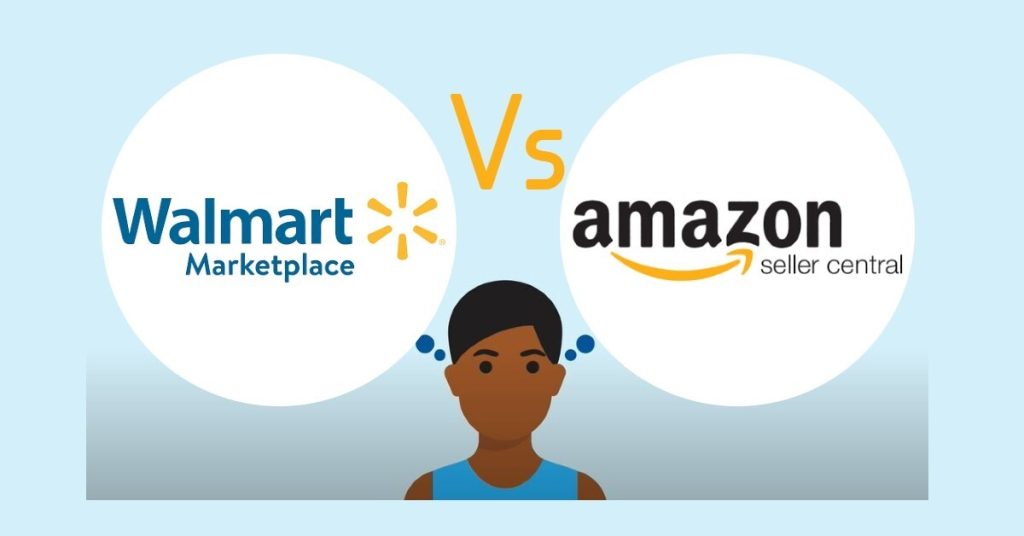
Navigating Walmart Marketplace: Key Differences from Amazon and How to Succeed
With eCommerce continuously evolving, many sellers are looking beyond Amazon and expanding to Walmart Marketplace. While both platforms provide immense opportunities, they operate with distinct rules, algorithms, and customer expectations. Understanding these differences and optimizing your strategy for Walmart can be the key to success.

Walmart vs. Amazon: Understanding the Core Differences
1. Approval Process and Seller Requirements
Unlike Amazon, where nearly anyone can create a seller account, Walmart Marketplace requires an application process. Sellers must provide business verification, tax documents, and a history of strong eCommerce performance. Walmart prioritizes established brands and retailers with a solid track record, making it more selective than Amazon. If you’re interested in understanding how Walmart’s requirements compare to Shopify’s approach, check out Shopify’s guide on selling on Walmart.
2. Competitive Pricing and Walmart’s Price Parity Rule
One of the most significant differences is Walmart’s strict pricing policies. Walmart enforces a Price Parity Rule, meaning if your product is available for a lower price (including shipping) on another platform, Walmart may remove the Buy Box or delist the item. Unlike Amazon’s dynamic pricing, where repricing tools help sellers stay competitive, Walmart expects the lowest possible prices at all times.
To remain compliant, sellers should use tools like Walmart Repricer and monitor competitor pricing regularly. Learn more about Walmart’s pricing strategies in this official Walmart guide.

3. Fulfillment Methods: WFS vs. FBA
Fulfillment on Walmart operates differently than Amazon’s FBA (Fulfillment by Amazon). Walmart offers WFS (Walmart Fulfillment Services), which provides fast shipping benefits similar to Prime. However, WFS is currently more selective, with stricter inventory limits and fewer warehouse locations. If you’re already using Amazon FBA, transitioning to WFS requires evaluating storage fees, processing times, and demand forecasting. To compare WFS vs. FBA, check out Walmart’s official WFS overview.
4. Walmart’s SEO vs. Amazon’s A9 Algorithm
Search ranking and SEO work differently on Walmart Marketplace. While Amazon’s A9 algorithm prioritizes conversion rates, sales history, and advertising spend, Walmart SEO heavily weighs price competitiveness, product content quality, and inventory availability. Here are some best practices for optimizing Walmart product listings:
Use Keyword-Rich Product Titles (but keep them concise and readable)
Enhance Descriptions with structured formatting and engaging content
Utilize High-Quality Images and Videos to boost conversion rates
Leverage Walmart Sponsored Products Ads to increase visibility
To learn more about Walmart SEO and best practices, read this detailed Walmart listing optimization guide.
5. Customer Service and Returns Policy
Walmart’s customer service expectations are more stringent than Amazon’s. Returns and refunds often favor buyers, and sellers must adhere to Walmart’s 90-day return policy for most items. Additionally, unlike Amazon, Walmart does not provide a built-in messaging system for direct customer communication. Sellers must ensure quick response times and handle disputes professionally to maintain a high Seller Performance Score.
For a deeper dive into handling Walmart’s return policies, visit Walmart’s Seller Center.

Strategies for Success on Walmart Marketplace
1. Optimize Your Product Listings
Walmart’s search engine favors detailed, high-quality listings. Ensure your product titles, descriptions, and bullet points are well-structured and contain relevant keywords. Unlike Amazon, where bullet points are prioritized, Walmart favors paragraph-based descriptions with easy readability.
2. Leverage Walmart Sponsored Ads
Amazon sellers are familiar with Amazon PPC, but Walmart has its own Sponsored Products Ads. Investing in Walmart Connect can drive product visibility and improve rankings. Walmart’s ad costs are often lower than Amazon’s, making it a cost-effective way to scale sales. Learn more about Walmart advertising in this Shopify guide on Walmart Ads.
3. Maintain Competitive Pricing
Walmart prioritizes the lowest prices, so use automated repricing tools to stay ahead of competitors. Additionally, offering free two-day shipping through WFS can improve conversion rates and enhance your product’s ranking.
4. Build Strong Reviews and Ratings
Customer feedback significantly impacts your Walmart success. Encourage buyers to leave reviews through post-purchase emails and Walmart Review Accelerator Programs. Having a strong review base improves both rankings and conversion rates. Learn more about Walmart’s review strategies.

5. Expand Your Brand Presence
Walmart is not just a marketplace—it’s an omnichannel platform. Consider exploring Walmart’s in-store pickup programs and leveraging their brick-and-mortar integrations to expand reach beyond online sales. If you’re interested in multi-channel retailing, Shopify offers insights on how to integrate Amazon, Walmart, and Shopify seamlessly.
Final Thoughts: Is Walmart Marketplace Right for You?
Expanding to Walmart Marketplace can be a game-changer, but it requires a different strategy than Amazon. Success hinges on competitive pricing, fulfillment efficiency, and SEO optimization. By leveraging Walmart’s unique advantages and aligning your approach with its marketplace standards, you can unlock new growth opportunities while reducing reliance on Amazon alone.
If you’re looking for a structured guide to kickstart your Walmart selling journey, check out Walmart’s official seller guide.
By following these best practices, sellers can effectively navigate Walmart Marketplace, optimize their listings, and establish a strong presence on a growing eCommerce platform. Whether you’re diversifying from Amazon or launching a new brand, understanding Walmart’s nuances will set you up for long-term success.














